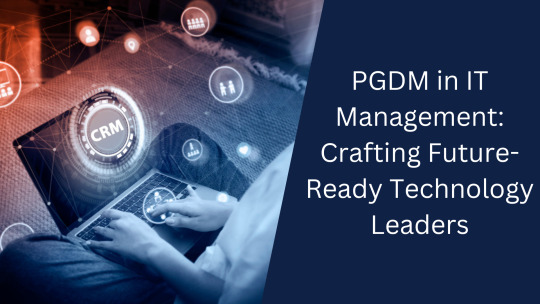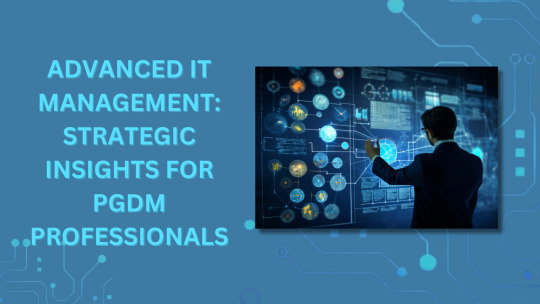#master data analytics
Explore tagged Tumblr posts
Text

Looking to build a career in data analytics? Hyderabad, a major tech hub in India, offers excellent data analytics courses designed for beginners and professionals. These courses cover essential concepts like data visualization, SQL, Python, Excel, and machine learning.
At Analytics Shiksha, we provide an industry-relevant Data Analytics Course in Hyderabad with real-life projects, expert mentorship, and 100% job assistance. Our program focuses on the Art of Problem Solving, ensuring you gain practical skills to excel in the field.
🔹 Key Features: ✅ Hands-on training with real-world datasets ✅ Affordable pricing with high-quality learning ✅ 1-on-1 interview assistance & job portal access ✅ 24x7 live chat support & AI Code Mentor ✅ Certification upon completion
Whether you're a student, working professional, or career switcher, our course helps you master data analytics and land your dream job. Enroll today!
#Data Analytics Course in Hyderabad#master data analytics#best data analytics courses#data analytics courses
0 notes
Text
Empowering Business Decisions with PiLog Data Analytics
In today’s data-driven world, organizations are seeking smarter ways to harness information for strategic advantage. PiLog Data Analytics provides a comprehensive solution designed to transform raw data into valuable insights, enabling businesses to make confident, informed decisions.
Turning Data into Actionable Insights
PiLog’s analytics platform leverages advanced technologies such as AI, machine learning, and real-time processing to deliver meaningful interpretations of data. By connecting data from multiple sources — including ERP, CRM, and field systems — PiLog enables a unified view of business operations.
Master Data Management as the Foundation
Accurate analytics starts with clean, standardized data. PiLog integrates powerful Master Data Management (MDM) to ensure data integrity across all functions. This foundation supports high-quality analytics, reducing the risk of errors and enhancing decision-making at all organizational levels.
Predictive Analytics for Strategic Planning
With PiLog’s predictive analytics tools, organizations can go beyond historical analysis to anticipate trends, forecast demand, and
mitigate risks. Whether it’s inventory optimization, maintenance scheduling, or customer behavior analysis, predictive insights help businesses stay ahead of the curve.
Real-Time Dashboards and Reporting
PiLog Data Analytics includes customizable dashboards and real-time reports tailored to different stakeholders — from executives to operations teams. These tools offer visibility into KPIs, financial performance, supply chain efficiency, and more, enabling fast, data-backed decisions.
Driving Digital Transformation
As part of the broader PiLog ecosystem, the analytics suite plays a key role in supporting digital transformation initiatives. By aligning analytics with data governance, data quality, and compliance efforts, PiLog helps organizations operate more intelligently, efficiently, and competitively.
Conclusion
PiLog Data Analytics is more than just a reporting tool — it's a strategic enabler. With a strong foundation in master data, predictive intelligence, and real-time visibility, PiLog empowers organizations to make smarter decisions and achieve long-term success in the digital era.
#Data Analytics#Master Data Management#Business Intelligence#Predictive Insights#Digital Transformation
0 notes
Text
Boost Your Pharma Visibility with CompShow by Chemxpert Database
Promote your brand with CompShow, a dynamic Products Advertisement and Company Showcase platform by Chemxpert Database—a leading name among pharma data providers and the top API pharma database company in India. CompShow enables pharmaceutical companies to highlight their offerings to targeted buyers, enhancing visibility and engagement. Whether you’re launching new products or building brand authority, CompShow provides the ideal digital stage to connect, advertise, and grow in the competitive pharma landscape.
#DataIntel Feed#Data Analytics#News Feed#Aspirin Drug Master File#pharma suppliers database in India#types of data in pharmaceutical industry#pharma data providers#active pharmaceutical ingredient database#top api pharma database company in India#CompShow#Company Showcase#Products Advertisement
0 notes
Text
#Performance Recording#tableau analytics certification#tableau desktop specialist#master data analytics courses#tableau desktop course
0 notes
Text

🚀 Step Into the World of Digital Marketing with DMA Digital Marketing Academy! 🌟 💡 Ready to start your digital career and explore endless opportunities? With DMA, you'll build the foundation for success, learn cutting-edge strategies, and earn globally recognized certifications. 🎯 What You'll Learn: ✅ Master essential skills like SEO, SMM, SEM, Email Marketing, and Analytics. ✅ Understand consumer behavior and spot trends. ✅ Create data-driven campaigns that deliver impactful results. 🎓 Get Certified in: ⭐ Google Ads | ⭐ HubSpot Content Marketing ⭐ Facebook Blueprint | ⭐ Hootsuite Social Marketing ⭐ Google Analytics 💼 Why Wait? Take the Success Path Today! 📞 Call us now at: +91-9045922719 | +91-8077561199 📢 Let DMA Digital Marketing Academy guide you toward your dream career. Your success starts NOW! 🚀 #meerut #dmamidas #midaspiyush #seo #smo #job #Digital_marketing #institute_in_meerut #best_digital_marketing_institute_in_meerut #digital_career #SEM #google_ads
#🚀 Step Into the World of Digital Marketing with DMA Digital Marketing Academy! 🌟#💡 Ready to start your digital career and explore endless opportunities? With DMA#you'll build the foundation for success#learn cutting-edge strategies#and earn globally recognized certifications.#🎯 What You'll Learn:#✅ Master essential skills like SEO#SMM#SEM#Email Marketing#and Analytics.#✅ Understand consumer behavior and spot trends.#✅ Create data-driven campaigns that deliver impactful results.#🎓 Get Certified in:#⭐ Google Ads | ⭐ HubSpot Content Marketing#⭐ Facebook Blueprint | ⭐ Hootsuite Social Marketing#⭐ Google Analytics#💼 Why Wait? Take the Success Path Today!#📞 Call us now at: +91-9045922719 | +91-8077561199#📢 Let DMA Digital Marketing Academy guide you toward your dream career. Your success starts NOW! 🚀#meerut#dmamidas#midaspiyush#seo#smo#job#Digital_marketing#institute_in_meerut#best_digital_marketing_institute_in_meerut#digital_career
0 notes
Text
Data Analytics: Turning Information into Strategic Insight
Powered by PiLog Group
In the age of digital transformation, data has become the new oil — but without proper analysis, it remains untapped potential. At PiLog Group, we believe that Data Analytics is the engine that turns raw information into actionable, high-impact insights.
As organizations generate vast amounts of data every day, the ability to analyze and interpret this information in real time is critical. Whether it’s to enhance operational efficiency, improve customer satisfaction, or drive innovation, data analytics has emerged as a cornerstone of modern enterprise success.
PiLog's Approach to Smart Data Analytics
At PiLog, we integrate advanced analytics capabilities across our platforms, enabling businesses to make smarter, faster, and more informed decisions. Our solutions are built with deep domain expertise in master data governance, and are enhanced by artificial intelligence, machine learning, and powerful visualization tools.
PiLog’s analytics ecosystem helps organizations:
Uncover hidden trends in master and transactional data
Detect anomalies that may signal risks or inefficiencies
Optimize workflows through intelligent recommendations
Align data insights with strategic KPIs
Empower users with dashboards and predictive models
0 notes
Text
PGDM in IT Management: Crafting Future-Ready Technology Leaders

#Information Technology Management#IT Strategy#PGDM Specialization#Emerging Technologies#Business Technology#Cybersecurity Management#Risk Management#Colleges for IT Management#Colleges in India#Data Analytics#Master’s in IT Management
1 note
·
View note
Text
Comprehensive IT Management: Key Concepts for PGDM Specialization

#Information Technology Management#IT Strategy#PGDM Specialization#Emerging Technologies#Business Technology#Cybersecurity Management#Risk Management#Colleges for IT Management#Colleges in India#Data Analytics#Master’s in IT Management
1 note
·
View note
Text
Complete Data Visualization Training: Transform Data into Insights
Learn to create powerful, interactive dashboards with our data visualization training program. Gain practical skills in designing charts, graphs, and visuals that drive better business decisions. This course is perfect for anyone looking to master visual storytelling and data interpretation.
0 notes
Text
Big Data Analytics and Master Data Management: A Powerful Combination
In today's data-driven landscape, organizations face immense pressure to harness vast amounts of information for better decision-making. Two essential practices—big data analytics and master data management—work hand-in-hand to ensure data is both insightful and accurate. Understanding the synergy between them is key to unlocking real business value.
What is Big Data Analytics?
Big Data Analytics refers to the process of analysing massive, complex datasets to uncover trends, patterns, and insights. It leverages advanced tools, algorithms, and technologies to make sense of structured and unstructured data collected from diverse sources like social media, customer interactions, and IoT devices.
Key benefits include:
Predictive insights: Forecast trends and customer behaviors
Real-time analytics: Make quick decisions using live data streams
Operational efficiency: Identify areas to optimize processes
What is Master Data Management (MDM)?
Master Data Management ensures the consistency, accuracy, and governance of an organization’s critical data—such as customer, product, or supplier information. MDM serves as a single source of truth, reducing data inconsistencies that often arise from disparate systems.
MDM provides:
Data quality control: Cleansing and deduplication
Centralized data governance: Policies to ensure compliance
Enhanced data accessibility: Makes reliable data available across departments
How Big Data Analytics and MDM Complement Each Other
1. Data Quality for Accurate Analytics:Big Data Analytics is only as good as the data it processes. Poor data quality can lead to faulty insights, which may impact business decisions. MDM ensures data consistency and eliminates errors, thereby improving the reliability of analytics results.
2. Holistic Customer Insights:MDM consolidates customer data from various touchpoints (CRM systems, e-commerce, etc.). With Big Data Analytics, businesses can then analyze this unified data to gain a deeper understanding of customer preferences, enabling personalized marketing and better customer experiences.
3. Efficient Data Integration:MDM lays a strong data foundation by integrating data from multiple systems into a central hub. This unified dataset can be processed efficiently using Big Data tools, enabling cross-functional teams to draw insights from comprehensive information.
4. Real-Time Decisions with Trusted Data:While Big Data provides real-time insights, MDM ensures that the underlying data is accurate and compliant with governance standards. This is especially crucial for industries like finance or healthcare, where decisions rely on both speed and data precision.
Conclusion
By combining big data analytics with master data management, organizations can ensure that their analytics efforts are built on high-quality, trusted data. This integration not only improves operational efficiency but also delivers meaningful insights that drive innovation and customer satisfaction. In a world where data is a strategic asset, leveraging these two practices together can unlock significant competitive advantages.
0 notes
Text
How do MDM tools enhance data accuracy and business efficiency?
MDM tools minimize errors by integrating data from multiple sources, cleansing inconsistencies, and maintaining a single source of truth. This leads to better decision-making, streamlined operations, and improved customer experiences. Discover how PiLog’s MDM solutions help businesses achieve this: PiLog Group.

1 note
·
View note
Text
Advanced IT Management: Strategic Insights for PGDM Professionals

#Information Technology Management#IT Strategy#PGDM Specialization#Emerging Technologies#Business Technology#Cybersecurity Management#Risk Management#Colleges for IT Management#Colleges in Bangalore#Data Analytics#Master’s in IT Management
1 note
·
View note
Text
Advanced Business Data Analytics Tools, Software, Services
Data analytics tools provide real-time performance insights. PiLog analytics transforms raw data into actionable insights, driving performance optimization
#Data Analytics Services#Best Master Data Migration Tools#Data Migration Tools for Data Integrity#Master Data Dictionary Software#Data Quality Best Practices#what is Master Data Management#Material Criticality Analysis
0 notes
Text
A Step-by-Step Guide to Taking a Data Science Course

For more enquiries, click here.
Introduction
Data science is a field that has been gaining significant attention over the past few years. Whether you're looking to switch careers, upskill in your current job, or simply explore a new interest, taking a Data Science Master Course can open up a world of opportunities. But with so many options available, where do you start? This guide will take you through the entire process, step by step, to help you find the right course and make the most of it.
Why Data Science?
Before diving into the specifics, it’s essential to understand why data science is such a valuable skill in today’s job market. Companies across various industries, from technology to healthcare, are using data science to make informed decisions, predict trends, and gain a competitive edge. Learning data science can make you an invaluable asset to these organizations and significantly boost your career prospects.
Step 1: Identify Your Goals
The first step in taking a Data Science Master Course is to identify your goals. Ask yourself why you want to learn data science. Are you looking to start a career as a data scientist? Do you want to add data science skills to your existing job role? Or perhaps you're interested in understanding data science for personal projects? Defining your goals will help you choose the right course that aligns with your objectives.
Short-Term vs. Long-Term Goals
It's also important to distinguish between short-term and long-term goals. For example, if you're looking for a quick introduction to data science, you might opt for a beginner-level course. However, if your goal is to become a professional data scientist, you'll need a more comprehensive course that covers advanced topics.
Step 2: Research Courses
Once you’ve identified your goals, the next step is to research available courses. The internet is filled with options, from free tutorials to paid programs. However, not all courses are created equal. To make the best choice, you’ll need to consider several factors, including the course content, instructor quality, and the reputation of the provider.
Course Content
A good Data Science Course Online should cover essential topics such as Python programming, statistics, machine learning, data visualization, and data manipulation. Ensure that the course you're considering provides a well-rounded curriculum that includes both theoretical and practical aspects.
Instructor Quality
The quality of the instructor can significantly impact your learning experience. Look for courses taught by experienced professionals with a strong background in data science. Reading reviews and testimonials can give you insight into the instructor’s teaching style and effectiveness.
Course Providers
There are several reputable providers of data science courses, including KVCH, Coursera, Udacity, and edX. KVCH offers comprehensive programs that cater to different levels of expertise, from beginners to advanced learners. When selecting a course, consider the reputation of the provider and the value it offers in terms of resources, support, and certification.
Step 3: Enroll in the Course
After you've done your research and selected a course, the next step is to enroll. This might involve filling out an application, paying a fee, or simply registering online. Ensure that you have all the necessary prerequisites, such as basic programming knowledge or familiarity with statistics, as some courses may require them.
Setting a Schedule
Once enrolled, it's crucial to set a realistic study schedule. Data science courses can be intensive, especially if you're balancing them with work or other commitments. Determine how much time you can dedicate each week and stick to your schedule. Consistency is key to making steady progress.
Step 4: Engage with the Material
Taking a course is more than just watching videos and reading texts. To truly benefit, you need to engage actively with the material. This includes participating in discussions, completing assignments, and working on projects.
Practical Application
Data science is a hands-on field. The more you practice, the better you’ll understand the concepts. Many courses offer practical exercises or projects that simulate real-world scenarios. Take full advantage of these opportunities to apply what you've learned.
Seek Help When Needed
If you find yourself struggling with a particular topic, don’t hesitate to seek help. Many online courses offer forums or support groups where you can ask questions and get assistance from instructors or fellow students. Engaging with the community can also provide valuable insights and different perspectives on the material.
Step 5: Complete the Course and Get Certified
After months of hard work, you’ll reach the final step—completing the course. This might involve passing a final exam, submitting a capstone project, or both. Upon successful completion, you’ll receive a certification that you can add to your resume or LinkedIn profile.
The Value of Certification
A certification from a recognized provider like KVCH, Coursera, or Udacity can boost your credibility and improve your job prospects. It serves as proof of your skills and knowledge in data science, making you more attractive to potential employers.
Step 6: Apply Your Skills
Completing a Data Science Master Course is just the beginning. To truly master data science, you need to apply your skills in real-world situations. Whether it’s through personal projects, internships, or on-the-job tasks, the more you practice, the more proficient you’ll become.
Continuous Learning
Data science is a rapidly evolving field, and staying up-to-date is crucial. Continue learning by taking advanced courses, attending workshops, or following industry trends. This will ensure that your skills remain relevant and that you're always at the forefront of the field.
Conclusion
Taking a Data Science Master Course is a significant step towards a rewarding career in a fast-growing field. By following this step-by-step guide, you can navigate the process with confidence and set yourself up for success. Whether you choose to study through KVCH or other platforms like Coursera, Udacity, or edX, the key is to stay committed, engage with the material, and continuously apply what you’ve learned. With the right approach, you’ll be well on your way to becoming a skilled data scientist.
Also, read this article:
Exploring the Benefits of a Data Science Course
0 notes
Text
Mastering IT Management: Strategies for Success in the Digital Age

#Information Technology Management#IT Strategy#PGDM Specialization#Emerging Technologies#Business Technology#Cybersecurity Management#Risk Management#Colleges for IT Management#Colleges in India#Data Analytics#Master’s in IT Management
1 note
·
View note